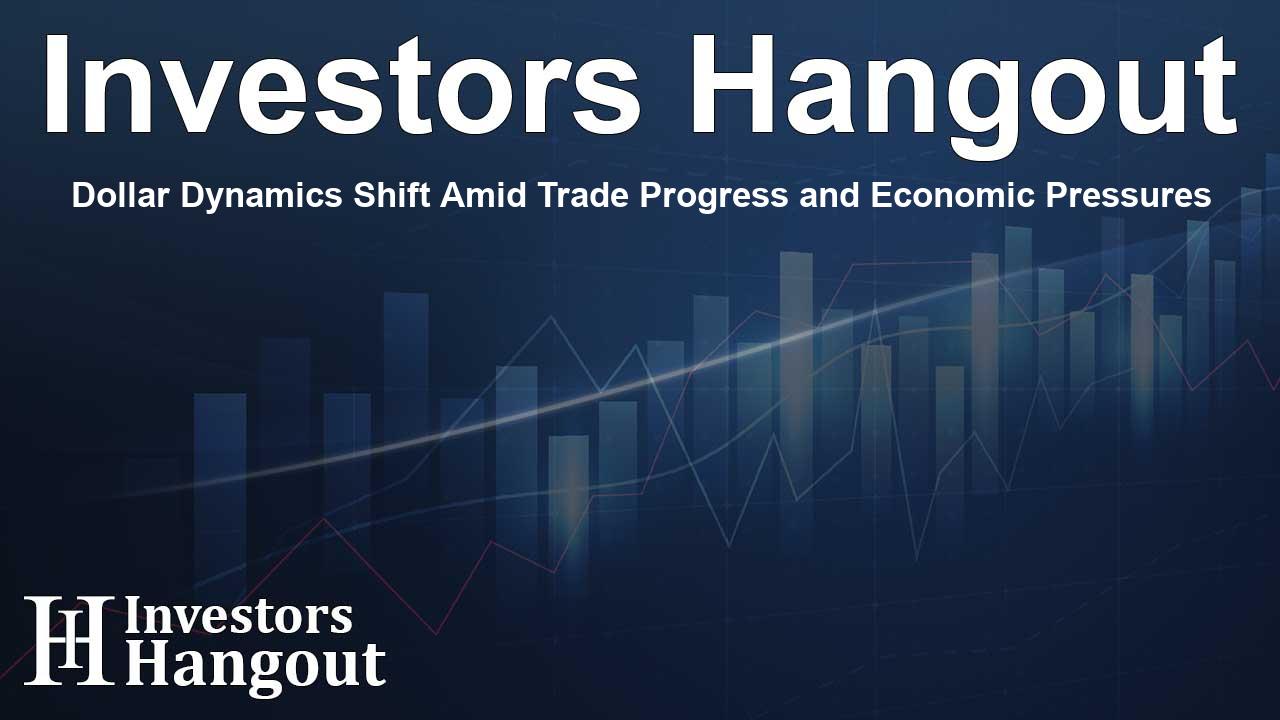Dollar Dynamics Shift Amid Trade Progress and Economic Pressures

Dollar Shows Fluctuations as Trade Deals Approach
The US dollar has experienced a mixed performance against other major currencies, reflecting the shifting landscape of global trade relationships. As the US edges closer to beneficial agreements, the dollar’s value does not seem to rise decisively, largely due to concerns about the Federal Reserve's monetary policy direction.
In recent analyses, it was noted that the core PCE index increased to 2.7% year-on-year. However, there was an unexpected decline in consumer spending, attributed to the fading effects of advance purchases made in anticipation of tariffs. Market sentiment continues to suggest that investors are expecting roughly 65 basis points worth of Federal Reserve rate cuts by year-end. This speculative optimism is being bolstered by promising developments in potential trade agreements with key partners.
Reports indicate that important diplomatic strides are being made; for instance, the White House seems close to finalizing a more substantial agreement with China. Meanwhile, Canada has decided to remove a digital service tax, resuming negotiations with the US that had stalled previously, impacting the Canadian dollar.
In relation to China, a significant milestone was achieved as the White House announced a deal facilitating faster processing of rare earth export licenses. This is viewed favorably by US Treasury officials, reinforcing the positive sentiment surrounding trade prospects.
Pressures Mount for Lower Interest Rates
Amidst this backdrop, US President Trump has intensified his criticism of Federal Reserve Chair Powell, openly expressing a desire for interest rates to be reduced to 1%. His remarks indicate a preference for a shift in Fed leadership toward a more accommodative stance on interest rates.
The impetus behind Trump's call for lower rates seems rooted in the pressing financial challenges posed by a substantial tax-cut plan currently moving through the legislative process. With projections suggesting this plan could add over $3 trillion to national debt over the next decade, manageable borrowing costs are seen as critical to facilitating future payments.
The evolving relationship between the dollar and tariffs is noteworthy; previously, heightened tariff concerns correlated with dollar depreciation. However, with fears of an approaching recession lessening, the dollar now appears more vulnerable in the face of positive trade news, leading to expectations of stability in price levels while reducing inflationary pressures.
Market Reactions and Growth Prospects Fuel Wall Street Optimism
On the stock exchange front, the main indices experienced significant gains, with movements driven by anticipated reductions in borrowing costs. The Dow Jones, S&P 500, and Nasdaq all saw impressive performances, reaching notable record highs. The upbeat trends in stock futures suggest market participants remain optimistic, particularly regarding potential growth in sectors like Artificial Intelligence.
Gold prices have noted a rebound owing to the dollar's recent softness. Nevertheless, despite the current uptick, gold is considered to be in a bearish corrective phase as market dynamics shift investor preferences from safe-haven assets to riskier equities.
Looking Ahead: Trade and Economic Factors
As we move forward, the interplay of trade enhancements and shifts in monetary policy will be vital in dictating the dollar’s fate. Investors will be closely monitoring these developments, as they influence capital flows and market positioning. With trade negotiations in progress, the landscape might shift further, providing both opportunities and challenges for market participants.
Frequently Asked Questions
What recent changes affect the US dollar's performance?
The US dollar's varying performance is closely tied to progress in trade deals and expectations regarding Federal Reserve interest rate cuts.
How do trade agreements influence the dollar?
Successful trade negotiations tend to strengthen the dollar by improving economic sentiment and expected growth, thereby enhancing investor confidence.
What has President Trump's stance been on interest rates?
President Trump has openly advocated for a reduction in interest rates to encourage economic growth and manage national debt effectively.
Why are stock markets responding positively?
Lower anticipated borrowing costs stimulate stock market growth, with investors optimistic about future company earnings and growth potential.
What might be the future outlook for commodity markets?
The commodity markets, particularly gold, could see fluctuations based on the dollar's strength and evolving investor sentiment towards risk assets.
About The Author
Contact Riley Hayes privately here. Or send an email with ATTN: Riley Hayes as the subject to contact@investorshangout.com.
About Investors Hangout
Investors Hangout is a leading online stock forum for financial discussion and learning, offering a wide range of free tools and resources. It draws in traders of all levels, who exchange market knowledge, investigate trading tactics, and keep an eye on industry developments in real time. Featuring financial articles, stock message boards, quotes, charts, company profiles, and live news updates. Through cooperative learning and a wealth of informational resources, it helps users from novices creating their first portfolios to experts honing their techniques. Join Investors Hangout today: https://investorshangout.com/
The content of this article is based on factual, publicly available information and does not represent legal, financial, or investment advice. Investors Hangout does not offer financial advice, and the author is not a licensed financial advisor. Consult a qualified advisor before making any financial or investment decisions based on this article. This article should not be considered advice to purchase, sell, or hold any securities or other investments. If any of the material provided here is inaccurate, please contact us for corrections.
